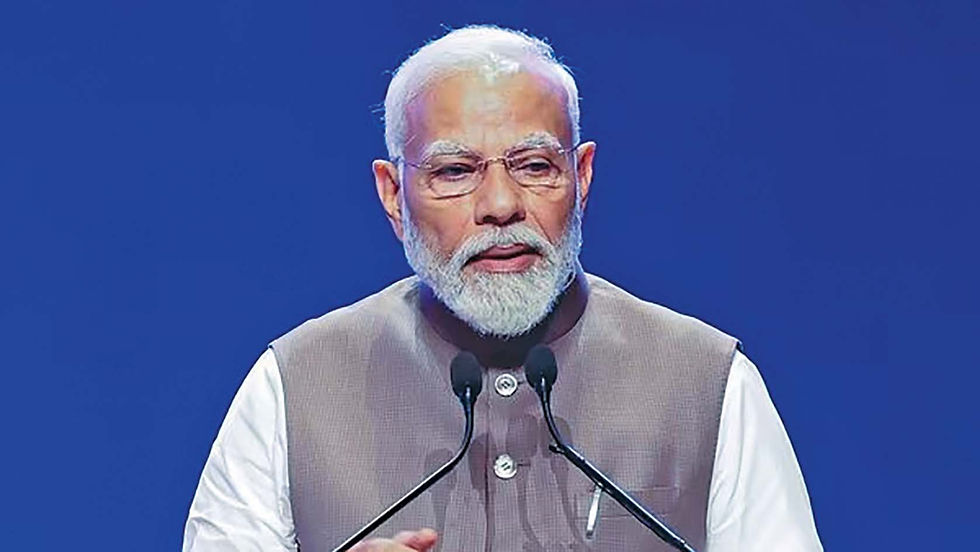Lessons from Maharashtra’s Political Realignment
- Prism Advertising
- Nov 25, 2024
- 3 min read

Maharashtra’s political drama has long been a microcosm of India’s broader ideological tussles. From the formation of the Shiv Sena in 1966, built on the fiery rhetoric of Marathi pride, to its metamorphosis into a Hindutva powerhouse, the party’s trajectory mirrors the changing contours of Indian politics. Yet, as the latest election results suggest, the once-formidable bastion of the Thackerays is being redefined, not by its founders, but by its renegades.
The rise of Eknath Shinde, who broke away from Uddhav Thackeray’s faction in a dramatic coup in June 2022, has marked a turning point for the Sena. Shinde’s pragmatic approach, bolstered by his alliance with the Bharatiya Janata Party (BJP), has allowed him to reposition the Shiv Sena within Maharashtra’s power structure. By leveraging Hindutva politics while simultaneously focusing on grassroots welfare schemes, Shinde has successfully appealed to urban and rural voters alike.
Conversely, Uddhav Thackeray’s Shiv Sena faction appears to have stumbled under the weight of its ideological contradictions. His decision to join hands with the Congress and the Nationalist Congress Party (NCP) under the Maha Vikas Aghadi (MVA) banner in 2019 was a bold move, but one that alienated many of the Sena’s traditional Hindutva-leaning voters. The subsequent defections and internal discord within the MVA have further exposed the fragility of this alliance.
The election results are telling. While Shinde’s Shiv Sena, riding on the coattails of the BJP-led Mahayuti (Grand Alliance), has made significant inroads, Uddhav’s faction has struggled to maintain relevance. Shinde’s ability to communicate effectively with voters, coupled with schemes like the Mukhya Mantri Mahila Samman Yojana, which provided financial aid to women voters, showcased a canny blend of welfare and religious politics.
The pre-poll infusion of cash through targeted government schemes appears to have rendered the MVA’s campaign slogans hollow. For voters, the question of who represents the ‘real’ Shiv Sena seems to have been decisively answered in this election. Eknath Shinde’s success can be attributed to his meticulous communication with colleagues, his constant availability and the logistical support he extended for grassroots planning. By embracing the Mahayuti, voters have cast aside the opposition’s MVA’s narratives of corruption, often negative, against the ruling coalition. For instance, the Sena (UBT)’s relentless litany of accusations and jeering against the Shinde Sena faction following the split, dubbing them ‘gaddar’ (traitors), ‘Mindhe Sena’ and ‘Khoke politics’ — came a cropper as the electorate showed it couldn’t care less about rhetoric.
The electoral outcome also underlines the BJP’s continued mastery in narrative-setting. Urban voters, traditionally sceptical of coalition governments, found Shinde's pragmatism and BJP’s discipline more appealing than the ideological compromises of the MVA.
The MVA’s failure, on the other hand, lies in its inability to craft a cohesive narrative. Its attempts to position itself as the defender of constitutional values and secularism fell flat in the face of the BJP-Mahayuti’s relentless campaign that appealed to Maharashtra’s deep-rooted religious sentiments. Additionally, the MVA’s internal bickering and lack of grassroots engagement highlighted a disconnect with voters.
Maharashtra’s political realignment underscores a critical lesson: ideological rigidity without adaptability is a liability. While Bal Thackeray’s Shiv Sena once thrived on fiery speeches and symbolic protests, today’s electorate demands tangible results. Shinde’s rise signals a shift from identity politics to result-oriented governance, albeit underpinned by the rhetoric of Hindutva.
For Uddhav Thackeray, the path forward is fraught with challenges. Rebuilding the Shiv Sena’s base requires not just rekindling the Marathi identity but also finding a way to bridge the divide between his secular allies and his Hindutva roots. Meanwhile, Shinde’s ascendancy serves as a stark reminder that in Maharashtra’s fiercely competitive politics, survival depends not on legacy but on reinvention.
The stakes for both Sena factions—and indeed for Maharashtra—remain high. In a state where politics often sets the template for national trends, the Shiv Sena’s internal schism offers a fascinating case study of the intersection between ideology, leadership, and electoral pragmatism. Whether Uddhav can reclaim his legacy or whether Shinde will permanently reshape the Sena’s identity will define the contours of Maharashtra’s politics for years to come.
(The author is a practicing advocate at the Bombay High Court. Views personal.)





Comments